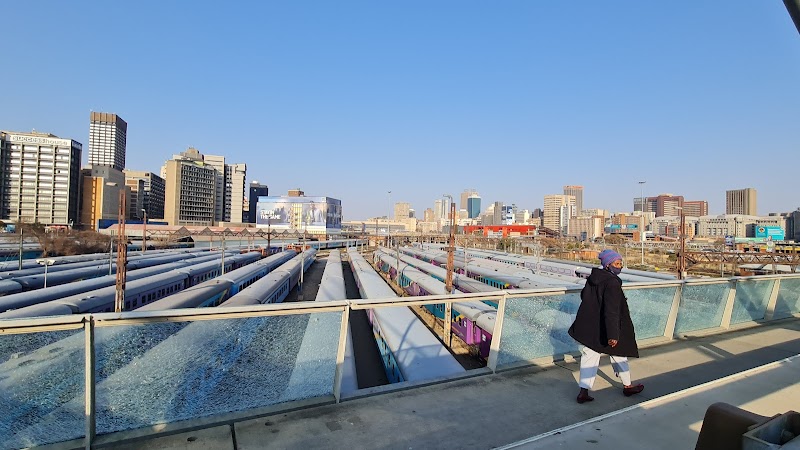
Soweto Marathon: Running Through History and Heart of Johannesburg
The Soweto Marathon offers runners a unique blend of physical challenge and cultural connection through the bustling streets of Johannesburg’s most famous township. Experience a historic course that combines moderate hills, dynamic urban energy, and connection to South Africa’s legacy.
Hydrate Before and During
Temperatures often climb fast; start well-hydrated and make use of hydration stations along the route to sustain energy without risking dehydration.
Wear Supportive Running Shoes
The route is mostly paved but can include uneven sections. Choose shoes with good cushioning and stability to protect your joints and maintain pace.
Pace Yourself on Inclines
The marathon has moderate hills that can sap energy if tackled too aggressively; keep a steady rhythm to conserve strength for later kilometers.
Start Early to Beat Heat
Morning temperatures are cooler and ideal for marathon running. Early starts enhance comfort and often offer vibrant sunrise views of Soweto.
Soweto Marathon: Running Through History and Heart of Johannesburg
The Soweto Marathon stands as more than just an athletic challenge—it's a pulse through Johannesburg’s vibrant urban heart and rich history. Spanning 42.2 kilometers (26.2 miles), this route threads through iconic sites and communities, offering runners both a physical test and a cultural journey. The course features a modest elevation gain of about 300 meters, punctuated by gentle ascents and descents that keep the terrain engaging yet approachable for most fitness levels.
Starting from the historic Orlando Stadium, runners weave along wide avenues framed by local shops and residential clusters, where the spirit of Soweto asserts itself not through quiet nature, but through the lively, sometimes boisterous urban atmosphere. Street vendors, cheering crowds, and children daring you forward become companions, creating a dynamic rhythm that drives each step.
The marathon’s surface is primarily paved roads, smooth but occasionally worn, so select supportive footwear with reliable shock absorption. Temperatures can rise quickly under Johannesburg’s sun, particularly between October and March, so hydration packs or access to frequent water points are non-negotiable. Early morning starts, common for this race, help combat heat while allowing runners to soak in the sunrise casting long shadows across the sprawling township.
Beyond the practical, the marathon invites respect for a place fiercely itself—where history pulses in every corner. Passing landmarks like Vilakazi Street—the only street globally to boast two Nobel laureates—and the Hector Pieterson Memorial, runners meet the legacy of struggle and hope firsthand. The Soweto Marathon is less about conquering terrain than about engaging with its spirit.
Physically, you’ll face a full 42.2k load with moderate hills that demand steady pacing rather than bursts of brute force. The environment does not whisper quietude but challenges with energy—crowds pushing forward, the city’s heat daring your resilience.
Prepare with layering options for early coolness and midday warmth, and pack lightweight, breathable fabrics. Know where water stations lie and plan nutrition carefully; the route’s urban setting means aid is available but not guaranteed at every kilometer.
For first-timers or seasoned marathoners, this race offers a grounded yet intense encounter with both the demands of distance running and the rich context of Johannesburg’s Soweto. Here, adventure is both a personal journey and a step through the pages of South Africa’s enduring narrative.
Nearby Trips
All Adventures
Boat Charters
Water Activities
Adventures near Johannesburg, Gauteng
Discover the unique and memorable adventures that make Johannesburg, Gauteng special.
Frequently Asked Questions
What is the elevation profile like for the Soweto Marathon?
The route features a total elevation gain of roughly 300 meters, with gentle hills that challenge runners but avoid steep or prolonged climbs. The terrain remains mostly paved, making it accessible yet physically engaging.
Are there hydration stations along the course?
Yes, water and electrolyte stations are spaced approximately every 5 kilometers, but availability can vary with event organization, so carrying your own hydration is advised, especially in hotter months.
What cultural landmarks does the marathon pass?
Runners pass several historic spots including Orlando Stadium, Vilakazi Street—known for being home to Nelson Mandela and Desmond Tutu—and the Hector Pieterson Memorial, all rich in the nation's struggle against apartheid.
Is the Soweto Marathon suitable for beginner runners?
While the course is mostly moderate, novices should train adequately to handle the full 42.2km distance and the undulating terrain. Walking sections and pacing strategies will help those newer to marathons.
What wildlife might I encounter on or near the route?
The marathon itself runs through urban settings, so wildlife is minimal, but local parks around Soweto occasionally host birds such as weavers, sunbirds, and urban-adapted mammals like mongooses.
When is the best time of day to run or watch the marathon?
Early mornings are best for runners due to cooler temperatures and softer light. Spectators will find enthusiastic crowds between 6 am and 10 am when the bulk of runners pass key landmarks.
Recommended Gear
Cushioned Running Shoes
Protects feet and joints on mostly paved, sometimes uneven streets.
Lightweight Hydration Pack
Allows you to carry water and electrolytes to prevent dehydration in warmer weather.
Breathable Running Apparel
Moisture-wicking fabrics keep you cool and comfortable over long distances.
Light Running Jacket or Layer
Useful for chilly early mornings or windy segments along the route.
Local Insights
Hidden Gems
- "The 'Freedom Square' area, a vibrant spot with local music and arts outside the main marathon path."
- "Kliptown, a slightly off-route historic township offering intimate cultural tours."
Wildlife
- "Urban bird species including the colorful Cape Robin-Chat and striking Red-eyed Bulbul often seen flitting around trees lining the streets."
History
"Soweto was at the epicenter of the anti-apartheid movement, with sites like the Hector Pieterson Memorial commemorating the 1976 student uprisings that shaped South Africa’s path to democracy."
